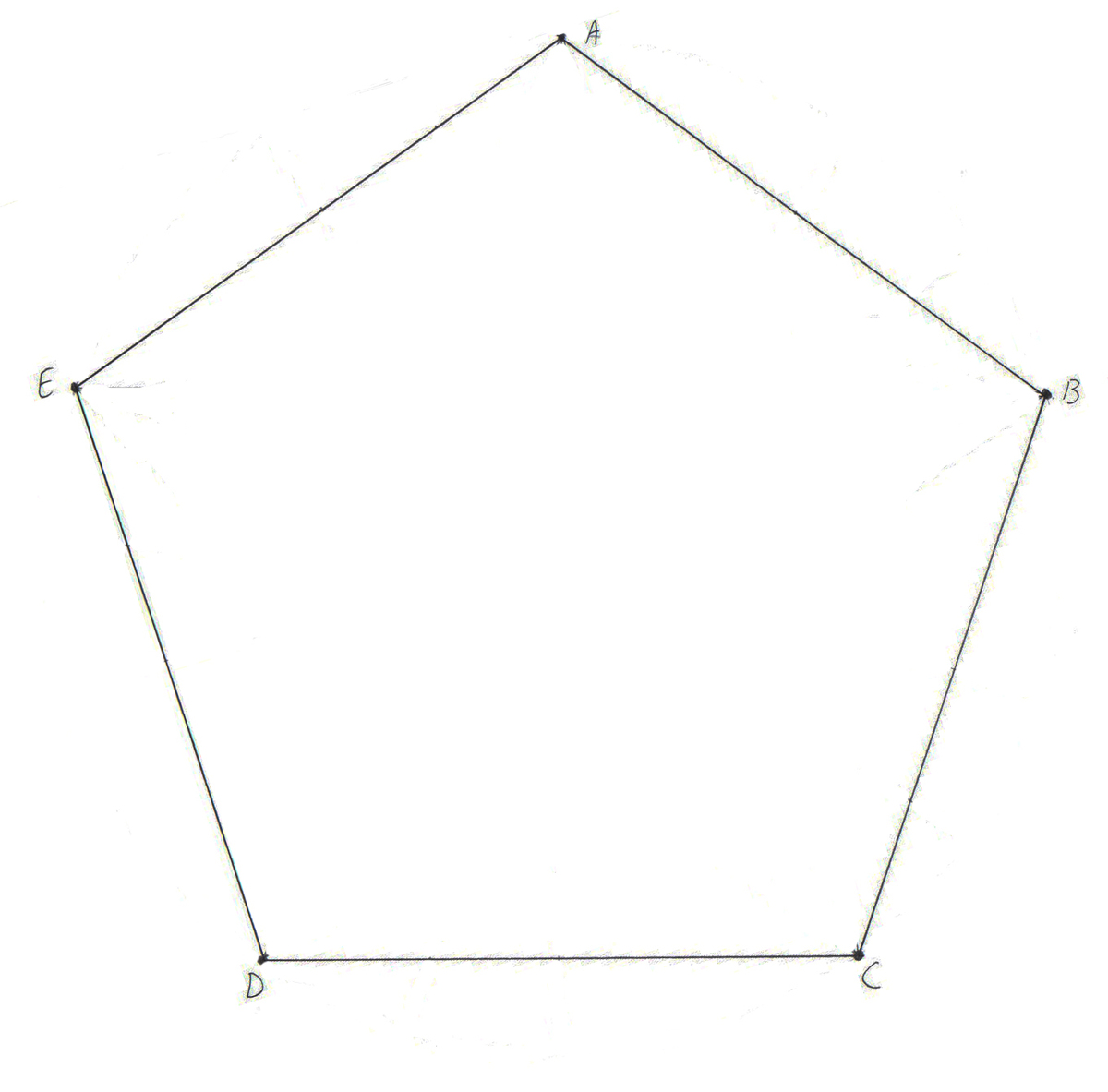The Golden Ratio: Pentagonal Diagonals

Here is the previous post concerning the Golden Ratio. For a collection of all the posts concerning the Golden Ratio, click #GoldenRatio below.
We all know that the diagonal of a unit square (a square with sidelength 1) is . We could easily figure this out using the Pythagorean theorem. Then I ask you, what is the length of the diagonal of a regular unit pentagon? Try to solve this before moving on.
As you may have guessed, it is the golden ratio! But how did we figure it out? Well, take the pentagon pictured above. There are a lot of ways to solve this problem, but some require more algebra than others. Other techniques used could be the Law of Cosines or Ptolmey's Theorem. Here, we will just use good old geometry. You may want to draw a picture for yourself to follow what's happening.
Note that since we have a regular pentagon, . Also, because of its symmetry, all of its diagonals are equal, i.e. . Define point as the intersection of the lines and and draw and . Now, let's do some angle chasing.
- We know, or could easily calculate, that the interior angles of a pentagon are
- is isoceles because
- because is isoceles
- Using the same logic on ,
- By the AA theorem,
- due to similarity. *
- is isoceles because
- *
Especially note steps 6 and 10. From there,
This should start to look familiar. If not, let . Then . Then is the golden ratio! Thus, for a regular unit pentagon, the diagonals have length .
Can you supply your own proof of this property of the pentagon? Don't be afraid to use algebra. What else is special about this pentagon?
Here is the next note.
Easy Math Editor
This discussion board is a place to discuss our Daily Challenges and the math and science related to those challenges. Explanations are more than just a solution — they should explain the steps and thinking strategies that you used to obtain the solution. Comments should further the discussion of math and science.
When posting on Brilliant:
*italics*or_italics_**bold**or__bold__paragraph 1
paragraph 2
[example link](https://brilliant.org)> This is a quote# I indented these lines # 4 spaces, and now they show # up as a code block. print "hello world"\(...\)or\[...\]to ensure proper formatting.2 \times 32^{34}a_{i-1}\frac{2}{3}\sqrt{2}\sum_{i=1}^3\sin \theta\boxed{123}Comments
There are no comments in this discussion.